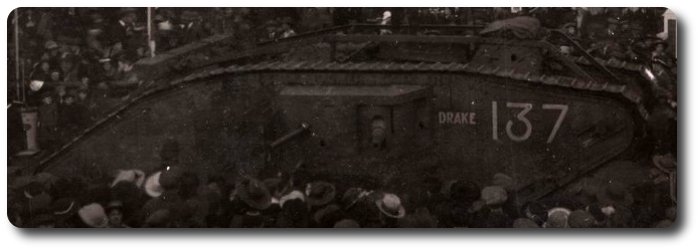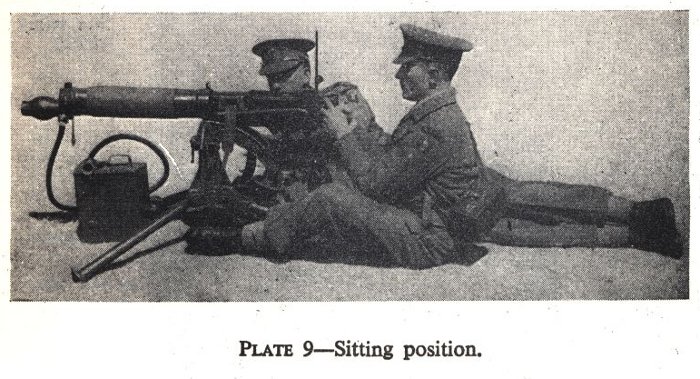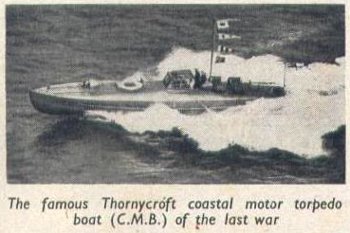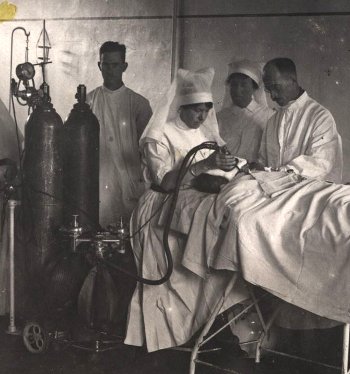Topic: CEF

War Inventions, Discoveries, Science
The Canadian Annual Review War Series; 1918, by J. Castell Hopkins, F.S.S., F.R.G.S., published 1919 (pp. 71-74)
An important phase of the [First World] War which developed along opposing lines was that of discoveries in science and medicine and surgery, inventions in killing and curing, in transportation and industry. Aviation, from a painful effort by isolated enthusiasts, became one of the wonders of the War and one of its most effective instruments; Submarines from a Jules Verne atmosphere of utter improbability assumed a status which imperilled the commerce, shipping and transportation of the world; motor-cycles, motor-lorries, automobiles, electric trucks, many and varied forms of electric transport assumed a place of fundamental importance in the carriage of millions of men and hundreds of millions of tons of supplies, of artillery, of ammunition, &c. in motor-cycles alone the Germans used about 18,000 at the first Battle of the Marne, the British had 40,000 in the spring of 1915 and the French 11,000 while the total in use by all the belligerants during the War ran up to one million in number. Huge Tanks, super-tanks and little whippets, revolutionized the practices of war over difficult country and largely contributed to solve the trench problem which for two years had held up armies of millions and caused many sanguinary conflicts. To British ingenuity and initiative was due this discovery as were the chief Aeroplane war-improvements of the period. To Italy and the genius of Marconi were due the discovery and, first uses of Wireless Telegraphy; to War requirements were due the tremendous adaptations of this discovery between ships, and under water, in aeroplanes and moving trains, between countries and Continents.
 When the War commenced Germany was popularly supposed to lead the world in scientific implements of warfare; as a matter of fact she lead chiefly in preparedness and quantity. As the struggle developed initiative passed to the British Allies whose aeroplanes knocked out the Zeppelins just as the British tank was perfected in face of German ridicule and the Machine gun, originally invented by a Frenchman, was perfected in the British Maxim. The British made the first big bombing war-plane—the Handley Page—and the German Gotha was only an inferior copy; the Stokes trench-mortar revolutionized for British armies the use of this otherwise ancient weapon. Poison gas was one of the German inventions, or adaptations of ancient barbaric warfare, with ; which they hoped to win and perhaps might have done so by its earlier use yet in 1918 they were denouncing the cruelty of Allied application of an improved and more powerful gas and declaring it contrary to Hague declarations! So effective had it become in their enemy's hands that Canadians on the Lens' front in one night alone, and in the greatest of the War's gas effects, projected 80 tons of liquid gas against the German lines. Meantime the horrible "mustard" gas had been invented by the Germans and at the close of the War the Americans had vast quantities of a new gas ready for use.
When the War commenced Germany was popularly supposed to lead the world in scientific implements of warfare; as a matter of fact she lead chiefly in preparedness and quantity. As the struggle developed initiative passed to the British Allies whose aeroplanes knocked out the Zeppelins just as the British tank was perfected in face of German ridicule and the Machine gun, originally invented by a Frenchman, was perfected in the British Maxim. The British made the first big bombing war-plane—the Handley Page—and the German Gotha was only an inferior copy; the Stokes trench-mortar revolutionized for British armies the use of this otherwise ancient weapon. Poison gas was one of the German inventions, or adaptations of ancient barbaric warfare, with ; which they hoped to win and perhaps might have done so by its earlier use yet in 1918 they were denouncing the cruelty of Allied application of an improved and more powerful gas and declaring it contrary to Hague declarations! So effective had it become in their enemy's hands that Canadians on the Lens' front in one night alone, and in the greatest of the War's gas effects, projected 80 tons of liquid gas against the German lines. Meantime the horrible "mustard" gas had been invented by the Germans and at the close of the War the Americans had vast quantities of a new gas ready for use.
 In Naval types and designs the British were dominant—even the Submarine in its discovery being a mixture of American and British inventiveness. There was the Super-dreadnaught with its biggest of all guns and its vast machinery oil-fired and turbine driven, there were the fastest of light cruisers, the Super-destroyer, the Coastal motor-boat. The invention of the Turbine was claimed by Americans as well as British; the first turbine ship was the Turbinia, a British Naval craft. The torpedo originally was a British invention as was the system of combined gun-fire on a battle-ship; the depth charge or water-bomb which did so much to arrest Submarine supremacy, also, was of British origin. Other inventions, mostly British in invention or application, were the listening or sound device by which Submarines could be heard and exactly located under water at a considerable distance—a sort of water Wireless which, also, promised to be most useful in days of peace and the marine under-water telephone or picking up of the human voice from one Submarine to another. The manufacture or preliminary use of concrete ships became a fact in Canada, and elsewhere, and might in time have proved another fatal obstacle to the submarine. Aero-photography was developed from aeroplanes to a high degree of scientific and war effectiveness. The utilization of rubbish, of war debris, of torn and smashed weapons, shells, fragments of castaway food, or garments, or utensils, was brought to a point of wonderful effectiveness. The dust-tin or garbage-can was mobilized throughout England and France, fertilizers were extracted from refuse, shipping was salvaged to a quite remarkable extent, bones were turned into glue or phosphates, or glycerine. Germany in these latter points had acknowledged eminence; isolation, necessity, scientific precision of knowledge, and application along certain lines, wrought wonders in the form of substitutes.
In Naval types and designs the British were dominant—even the Submarine in its discovery being a mixture of American and British inventiveness. There was the Super-dreadnaught with its biggest of all guns and its vast machinery oil-fired and turbine driven, there were the fastest of light cruisers, the Super-destroyer, the Coastal motor-boat. The invention of the Turbine was claimed by Americans as well as British; the first turbine ship was the Turbinia, a British Naval craft. The torpedo originally was a British invention as was the system of combined gun-fire on a battle-ship; the depth charge or water-bomb which did so much to arrest Submarine supremacy, also, was of British origin. Other inventions, mostly British in invention or application, were the listening or sound device by which Submarines could be heard and exactly located under water at a considerable distance—a sort of water Wireless which, also, promised to be most useful in days of peace and the marine under-water telephone or picking up of the human voice from one Submarine to another. The manufacture or preliminary use of concrete ships became a fact in Canada, and elsewhere, and might in time have proved another fatal obstacle to the submarine. Aero-photography was developed from aeroplanes to a high degree of scientific and war effectiveness. The utilization of rubbish, of war debris, of torn and smashed weapons, shells, fragments of castaway food, or garments, or utensils, was brought to a point of wonderful effectiveness. The dust-tin or garbage-can was mobilized throughout England and France, fertilizers were extracted from refuse, shipping was salvaged to a quite remarkable extent, bones were turned into glue or phosphates, or glycerine. Germany in these latter points had acknowledged eminence; isolation, necessity, scientific precision of knowledge, and application along certain lines, wrought wonders in the form of substitutes.
 Surgical and medical developments were one of the miracles of War. That, with the single exception of the Influenza epidemic near its close, 50,000,000 men could grapple over a term of years in deadly conflict, amid the devastation of whole countries and nations, without any general spread of contagious diseases, or epidemics of deadly and world-wide nature, was due to expert sanitation and surgery. There were, of course, local exceptions such as the Typhus which ravaged Serbia early in the War and at times attacked the Austrian and German armies; but, as a whole, these conditions were not of the nature so greatly feared in preceding wars. The use of anti-typhoid and anti-tetanus sera to prevent infection was wide-spread and to these and other advanced application of bacteriology, with hygiene and sanitation, the British and French armies owed their wonderful health. So, with the large proportion of wounded men saved as to their lives, or made efficient again as fighting units or private citizens, the result was due (1) to the masterly control of wound infections and (2) to a surgery such as the world had never before known or believed to be possible. As to the former the Germans claimed that at least 60 per cent. of their wounded returned to the field; it was alleged by Allied medical men that of the wounded who survived 6 hours 90% recovered. Anaesthetics and antiseptics had much to do with this and Dr. Woods Hutchinson in his book, The Doctor in War, declared after a year at the Allied front that chlorin had saved more lives in wounds and in drinking water than it had killed in gas:
Surgical and medical developments were one of the miracles of War. That, with the single exception of the Influenza epidemic near its close, 50,000,000 men could grapple over a term of years in deadly conflict, amid the devastation of whole countries and nations, without any general spread of contagious diseases, or epidemics of deadly and world-wide nature, was due to expert sanitation and surgery. There were, of course, local exceptions such as the Typhus which ravaged Serbia early in the War and at times attacked the Austrian and German armies; but, as a whole, these conditions were not of the nature so greatly feared in preceding wars. The use of anti-typhoid and anti-tetanus sera to prevent infection was wide-spread and to these and other advanced application of bacteriology, with hygiene and sanitation, the British and French armies owed their wonderful health. So, with the large proportion of wounded men saved as to their lives, or made efficient again as fighting units or private citizens, the result was due (1) to the masterly control of wound infections and (2) to a surgery such as the world had never before known or believed to be possible. As to the former the Germans claimed that at least 60 per cent. of their wounded returned to the field; it was alleged by Allied medical men that of the wounded who survived 6 hours 90% recovered. Anaesthetics and antiseptics had much to do with this and Dr. Woods Hutchinson in his book, The Doctor in War, declared after a year at the Allied front that chlorin had saved more lives in wounds and in drinking water than it had killed in gas:
The armies in Flanders and Northern France last winter, out in open trenches in some of the vilest and 'sickliest' weather troops ever had to face, had less sickness and fewer deaths from pneumonia and all other diseases than they used to have in barracks in time of peace, and far less than the general civil population at home. Instead of five men dying of disease to every one in battle, in the British army on the Western front, only one life has been lost by disease to every ten in battle. In fact, disease as a factor in the Army death rate has been almost wiped out, completely so in the sense that the amount of sickness in the camp and the deaths from disease at the Front have been barely half what they were in barracks in times of peace.
As to Surgery the most marvellous things were done in saving life to the smashed and broken human frame or in replacing flesh and skin with imitations which seemed to take the place of the original. Let a quotation from Colonel Pierre Duval of the French Reserve Medical Corps, as expressed (Nov. 1, 1918) at Fort Oglethorpe, in the United States, indicate the surgical situation: "I have removed the human lung from the chest cavity with forceps, tied its bleeding blood vessels, cleansed its outer surface and while still holding it in my hands and manipulatingit as you would a handkerchief, I have run thin pieces of gauze up its tracts. Feeling my way carefully along its walls I have removed a bullet or shell fragment. Then, after suturing the aperture, I have placed the respiratory organ back into the cavity of the chest. In two-thirds of the cases upon which I have so operated the patient lived."

